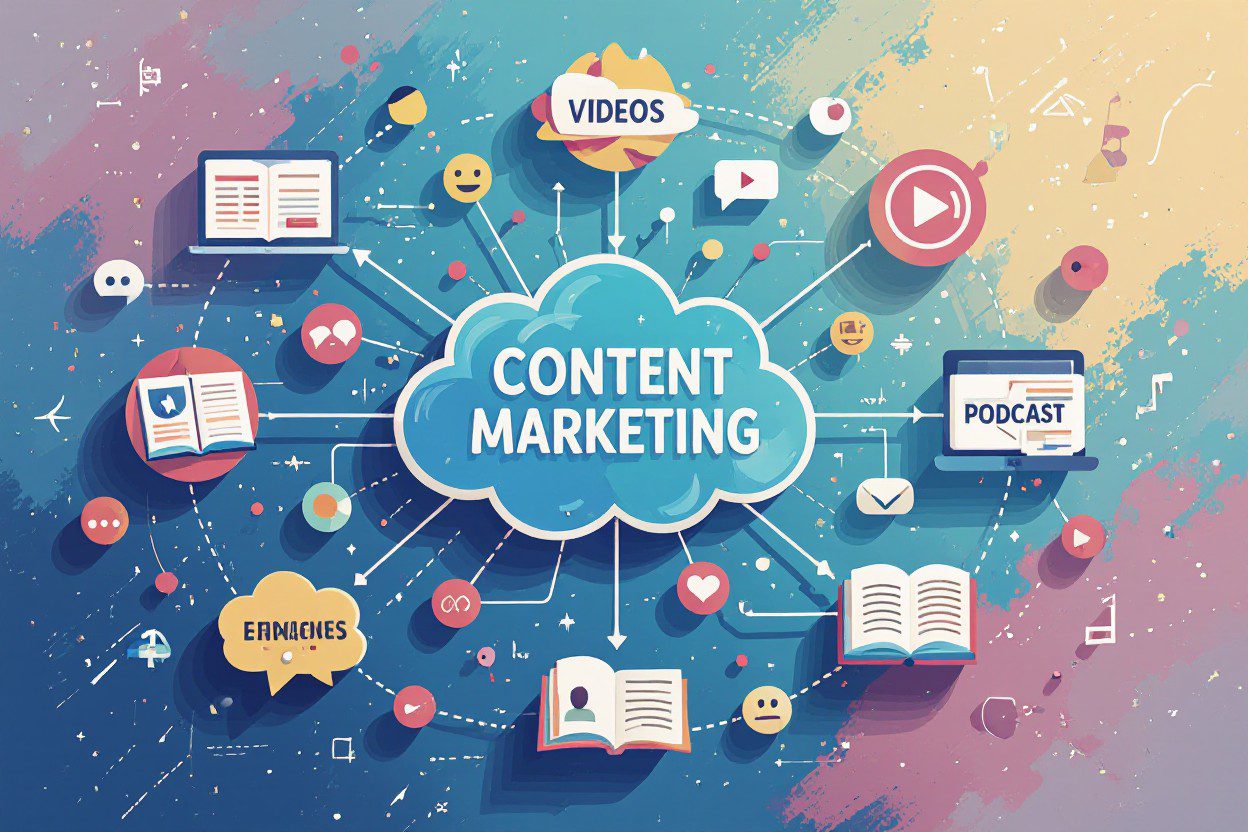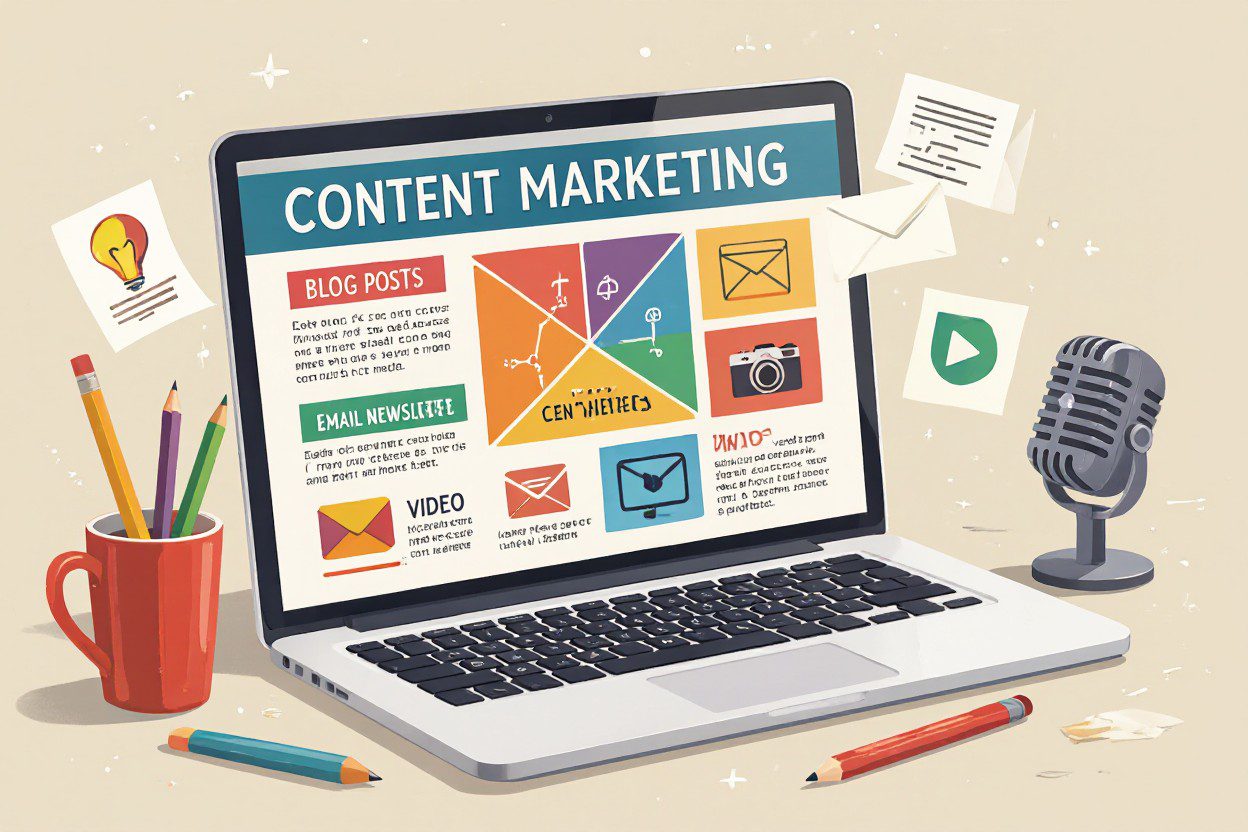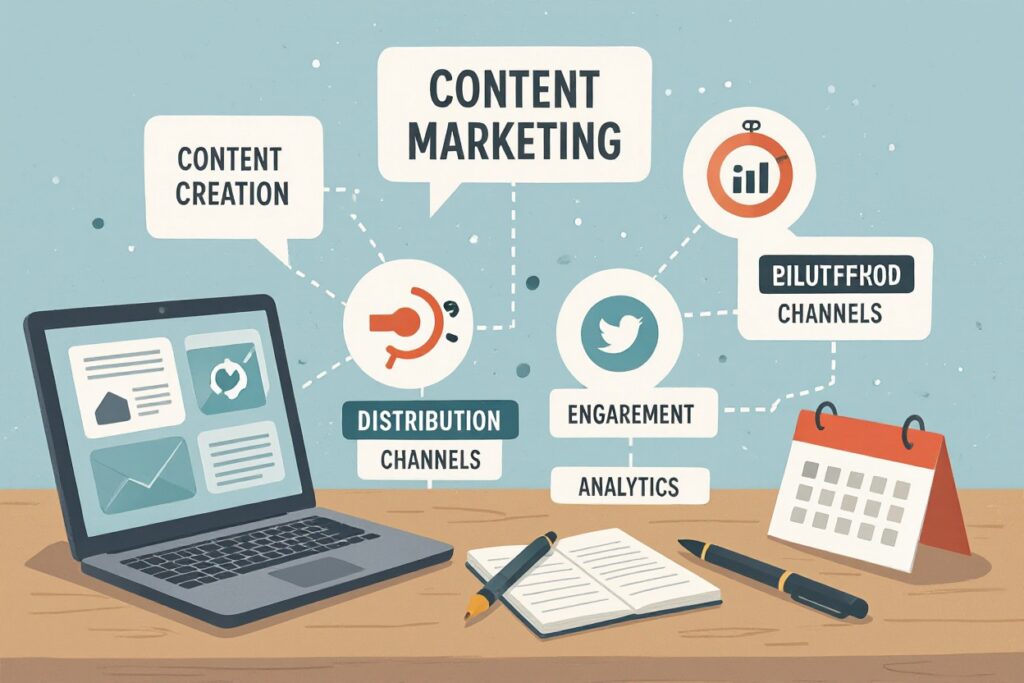You can think of content marketing as the practice of creating and sharing useful, relevant material to attract and retain an audience and guide them toward informed decisions; I explain how to plan, produce, and measure content so your brand builds trust, answers customer needs, and drives measurable results.


The Essence of Content Marketing: What It Truly Means
I focus on creating content that answers specific buyer questions, builds trust, and nudges people through the funnel over months, not seconds. You gain long-term SEO value, repeat traffic, and measurable conversions by publishing useful articles, videos, and emails; content marketing often costs substantially less per lead than paid channels and lets you track metrics like organic traffic, engagement rate, and customer lifetime value to prove ROI.
Distinguishing Content Marketing from Traditional Advertising
I view traditional ads as paid interruptions—short bursts of reach bought for immediacy—while content marketing earns attention by delivering value. For example, a Super Bowl spot can cost around $7 million for 30 seconds, whereas a targeted blog series or evergreen video campaign can generate sustained organic traffic and nurture leads at far lower cost. You should compare impressions and CPMs with long-term metrics like organic conversions and repeat visits.
The Role of Storytelling in Captivating Audiences
I craft stories that turn features into relatable outcomes: origin tales, customer journeys, and problem→solution narratives. Brands like Dove used emotional storytelling to shift perceptions and drive engagement across channels. You boost recall and sharing when content follows a clear arc—hook, tension, payoff—and I frequently see higher dwell time and social shares on pieces that center a real person or use a short video testimonial.
Use concrete story techniques: open with a 5–10 second hook on social, frame a customer as the “hero,” show measurable before/after results, and end with a clear next step. I recommend 60–90 second videos for social distribution, 800–1,200 word blog posts for SEO, and case studies with specific metrics (percent improvement, time saved, ROI) to persuade skeptical buyers and move them toward conversion.
The Strategic Framework: Building Blocks of Content Marketing
I break the framework into clear components: 3–5 content pillars tied to your brand promise, an editorial calendar with weekly cadence, content formats mapped to funnel stages, and a distribution plan split (60% organic, 30% paid, 10% partnerships). I also assign owners, set review cycles, and use metrics dashboards so your team can iterate every 30–90 days based on engagement and conversion data.
Setting Goals: What Success Looks Like
I define SMART goals such as “increase organic traffic 40% in 6 months,” “generate 500 MQLs per quarter,” or “lift landing-page conversion by 1.5 percentage points.” I tie each goal to a KPI (sessions, MQLs, conversion rate, CAC, LTV), a reporting cadence, and a target owner so your team knows which content moves the needle and how to measure ROI.
Identifying Your Target Audience: Who You’re Talking To
I build audience profiles using quantitative data (GA, CRM, cohort analysis) and qualitative input (10 customer interviews, support logs). Typical segmentation includes company size, role, buying stage, and preferred channels. For example, a B2B SaaS I worked on targeted SMB marketing managers aged 28–45 with budgets $5k–$50k and prioritized ease-of-use and integrations.
I map content to personas by defining job title, top 3 pain points, decision criteria, content preferences, and common objections. I recommend running a 200-response survey, analyzing 12 months of behavior in GA, and conducting five 30-minute user interviews to validate hypotheses. Then I create a persona card and a 90-day content plan that aligns topics to awareness, consideration, and decision stages.


Crafting Compelling Content: Essentials for Engagement
I optimize headlines, lead hooks, and CTA placement to boost attention and conversions; about 80% of readers scan headlines, so I A/B test five headline variants and pick the top performer. I aim for a 1.5–2 minute read for most blog posts, use clear subheads and short paragraphs, and place one CTA around the 60–70% mark—these small adjustments raised my click-throughs by double digits in multiple campaigns.
Diverse Formats: Blogs, Videos, and More
I match format to goal: long-form blogs (1,200–2,000 words) for organic search and backlinks, short videos (15–60s) for social engagement, webinars (20–60 minutes) for lead gen, and podcasts (20–45 minutes) for audience loyalty. I repurpose a single webinar into a blog, three short clips, an infographic, and an email series—turning one asset into five distribution-ready pieces to maximize reach and ROI.
Quality vs. Quantity: Balancing Your Content Efforts
I shifted from daily posting to three focused pieces weekly and saw engagement rise 33% over three months; you should prioritize high-intent topics, original data, and clear CTAs rather than chasing volume, since deeper pieces generate more backlinks, higher time-on-page, and better conversion rates.
I track organic traffic, time on page, conversion rate, and backlinks as my core KPIs, and enforce minimum standards: blogs ≥500 words with 3+ credible sources for niche topics, videos ≥3 minutes with captions, and at least one content pillar per month. I plan three to five pillars and repurpose each pillar into roughly four formats to sustain cadence without sacrificing depth.
Measuring Impact: Analyzing Content Marketing Success
I track outcomes by tying content to business goals: traffic, lead volume, and revenue per asset. Using GA4, Search Console and HubSpot I tag campaigns with UTM parameters and attribution windows, which showed one campaign drove 42% of new leads last quarter. I compare month-over-month traffic, conversion rates, and cost-per-lead to decide whether a piece is driving real value or just vanity metrics.
Key Metrics for Evaluating Performance
I monitor sessions, unique visitors, average time on page (I aim for 2–4 minutes), bounce rate, CTR on organic listings, and conversion rate (typical blog baseline 1–3%). For impact I track MQLs, SQLs, revenue attributed, CAC and ROI. I also watch backlinks and social shares as amplifiers; tools like Ahrefs and SEMrush reveal keyword rankings and referral growth that correlate with long-term traffic gains.
Adjusting Your Strategy Based on Data Insights
I run experiments and iterate: A/B test headlines and CTAs, refresh underperforming posts, and reallocate promotion to top 20% content that generates 80% of results. If a post has high impressions but CTR under 2%, I rewrite meta titles and thumbnails; if time on page is low, I add multimedia or break up copy. Small changes often lift conversion rates by double digits.
I follow a clear loop: form a hypothesis (e.g., a new CTA will lift sign-ups 15%), pick a primary metric, run the test until you hit a meaningful sample (often 1,000+ pageviews or 100+ conversions), then analyze significance with a stats tool. For distribution, I scale paid spend by 10–30% on winners and repurpose top posts into email sequences and short videos. I archive or rework consistently underperforming assets to keep the content library efficient.
Future Trends: What’s Next for Content Marketing
Adapting to rapid shifts, I track AI-driven personalization, short-form video dominance, and platform-native commerce. Video already accounts for roughly 80% of global internet traffic, so I prioritize snackable clips and repurposing long-form assets. Brands testing live shopping and AR try-ons report higher engagement; I use A/B tests and cohort analysis to measure lift, scaling formats that improve conversion and lower acquisition costs.
The Rise of Personalization and AI
I use large language models and first-party data to generate tailored headlines, product descriptions, and email sequences. Epsilon research indicates about 80% of consumers prefer personalized experiences, so I run segmented campaigns and automated workflows that cut content production time by up to 60% while improving relevance. I also audit prompts and training data to reduce bias and ensure privacy-compliant targeting.
Emerging Platforms and Their Role in Strategy
I allocate dedicated experiments to TikTok, Discord, Substack, and emerging AR/VR channels, because reach and retention behave differently across each. TikTok (1B+ monthly users) delivers rapid reach with short-form UGC, newsletters deepen retention, and community apps create direct feedback loops. I pilot two new channels per quarter and scale only when CPA falls or LTV improves against benchmarks.
On TikTok I test five creative variations weekly to identify hooks and sound trends, and I repurpose top performers into Instagram Reels and YouTube Shorts. For Discord and Telegram I run gated experiences—exclusive drops or AMA sessions—to boost retention; one client I advised grew repeat purchase rate by 18% after a six-month community program. I track acquisition cost, retention cohort lift, and content ROI before reallocating budget.
Final Words
So I define content marketing as creating and sharing useful, relevant material that attracts and keeps an audience; I show you how it builds trust, demonstrates expertise, and nudges people toward action without hard selling, so you can grow your reach, convert prospects, and sustain relationships.
FAQ
Q: What is content marketing in simple terms?
A: Content marketing is creating and sharing useful, relevant material—like articles, videos, guides, or social posts—to attract and help a specific audience. Instead of pushing sales pitches, it focuses on solving problems, answering questions, or entertaining people so they trust your brand and choose you when they need a product or service.
Q: Why does content marketing matter for businesses?
A: Content marketing builds awareness and trust over time, drives organic search traffic, and generates leads at lower ongoing cost than many paid campaigns. Good content educates potential customers, demonstrates expertise, and keeps current customers engaged, which can lead to higher conversions, repeat business, and stronger word-of-mouth referrals.
Q: How do I start a simple content marketing plan?
A: 1) Define a clear goal (brand awareness, leads, sales, retention). 2) Identify your target audience and their common questions or needs. 3) Choose one or two content formats (short blog posts, quick how-to videos, a weekly newsletter) and channels where your audience spends time. 4) Create a basic content calendar, produce helpful content consistently, and promote it via social, email, or partnerships. 5) Track metrics like traffic, engagement, and leads, then tweak topics and formats based on what performs best.

